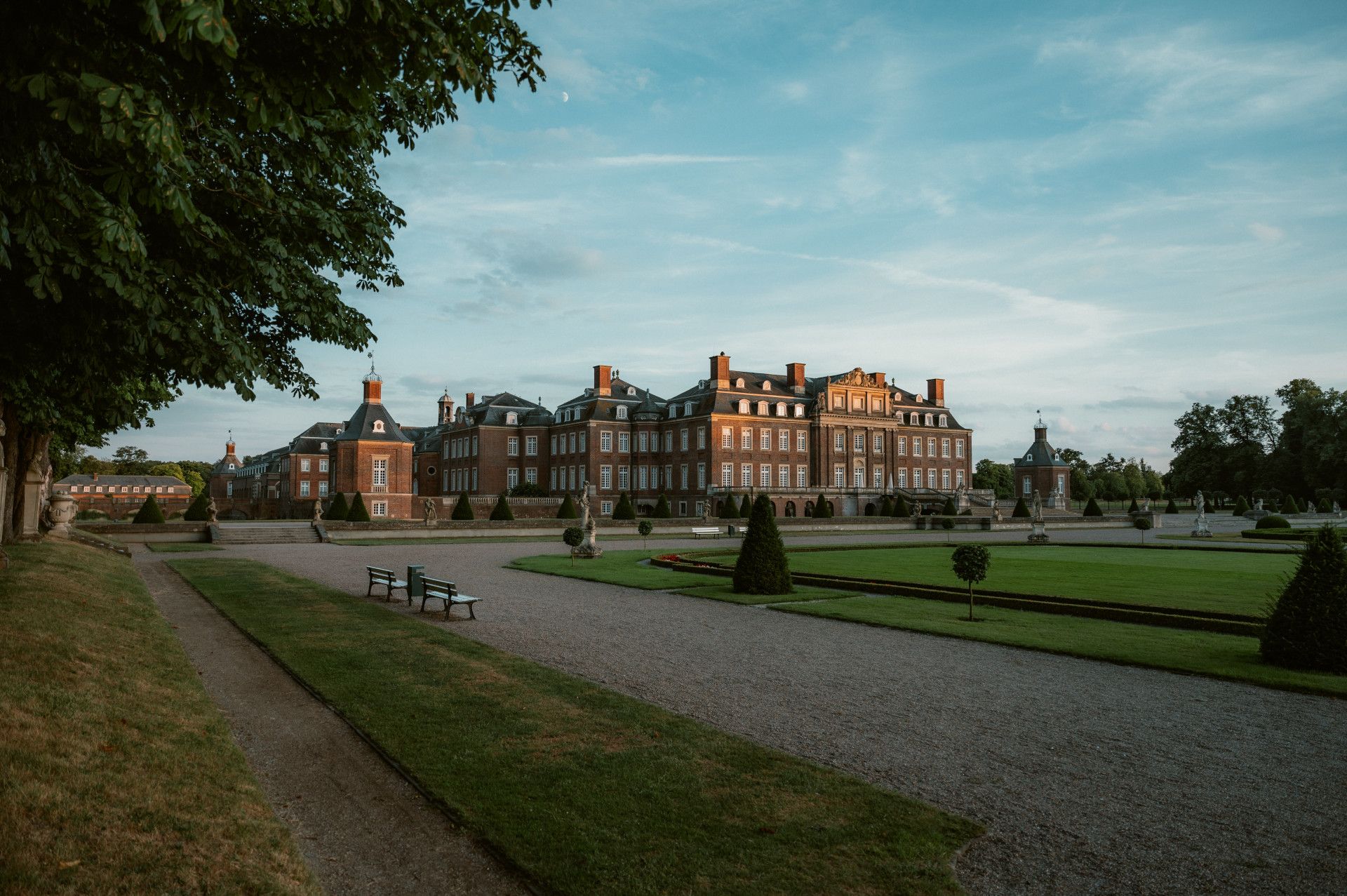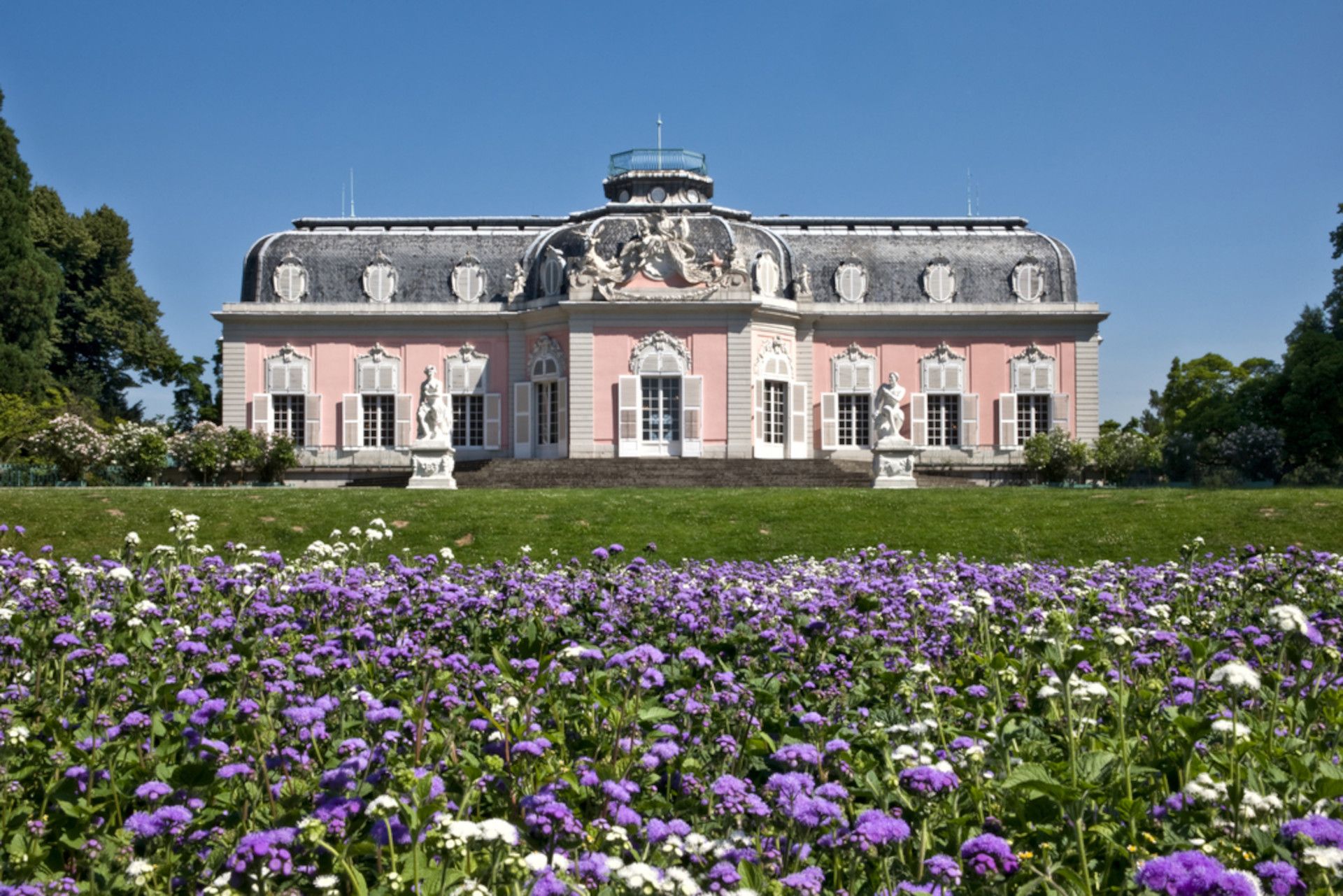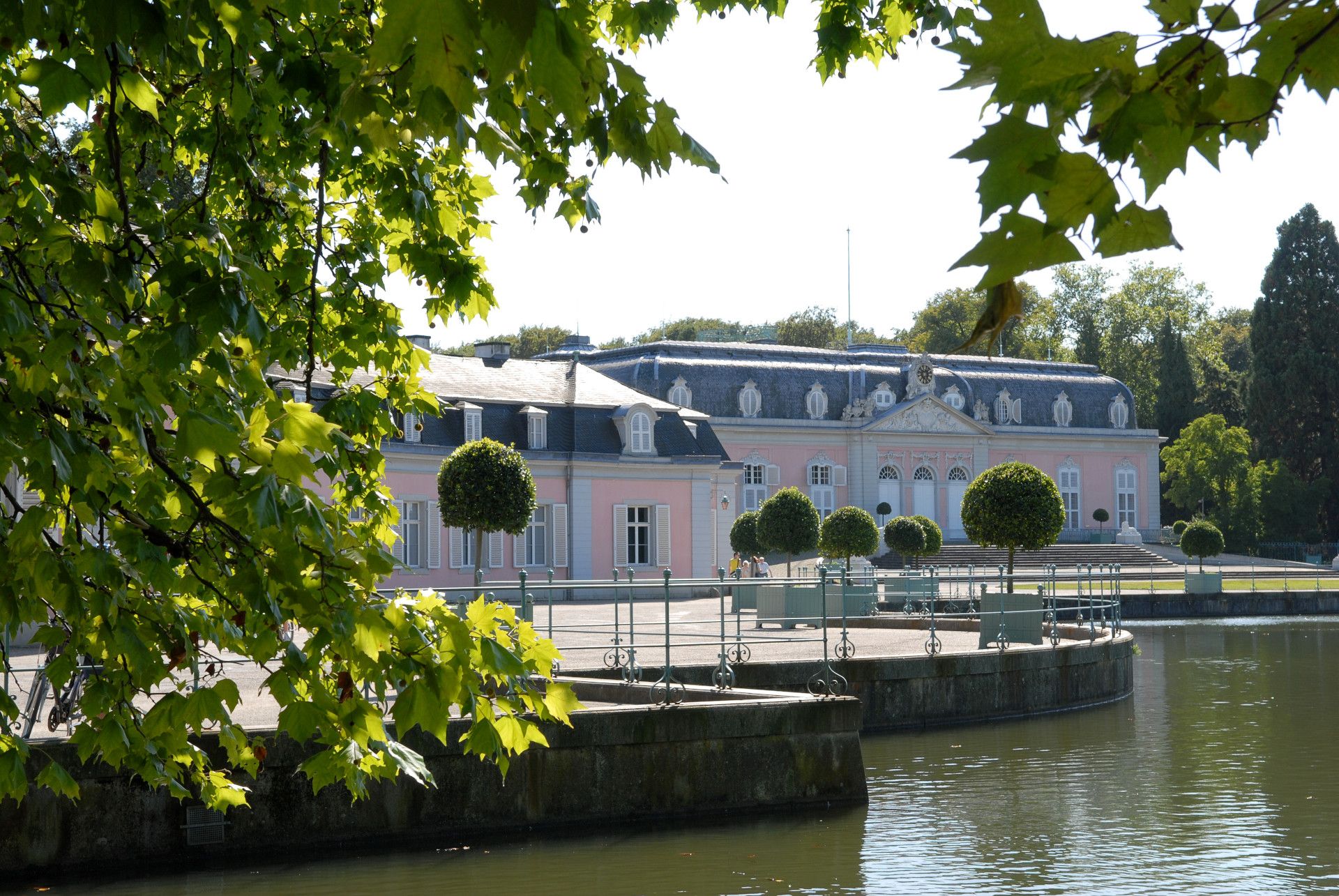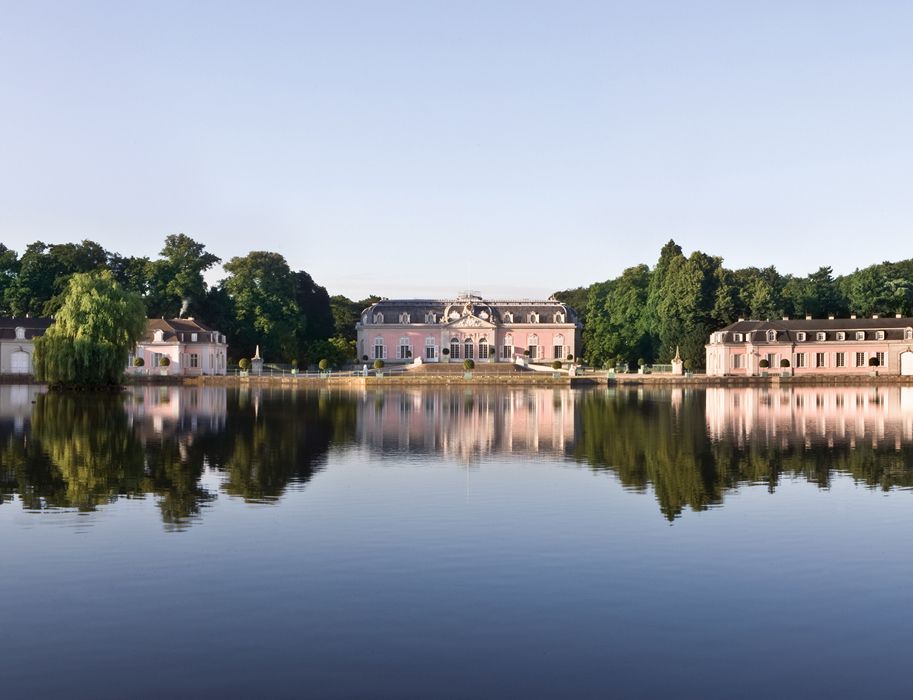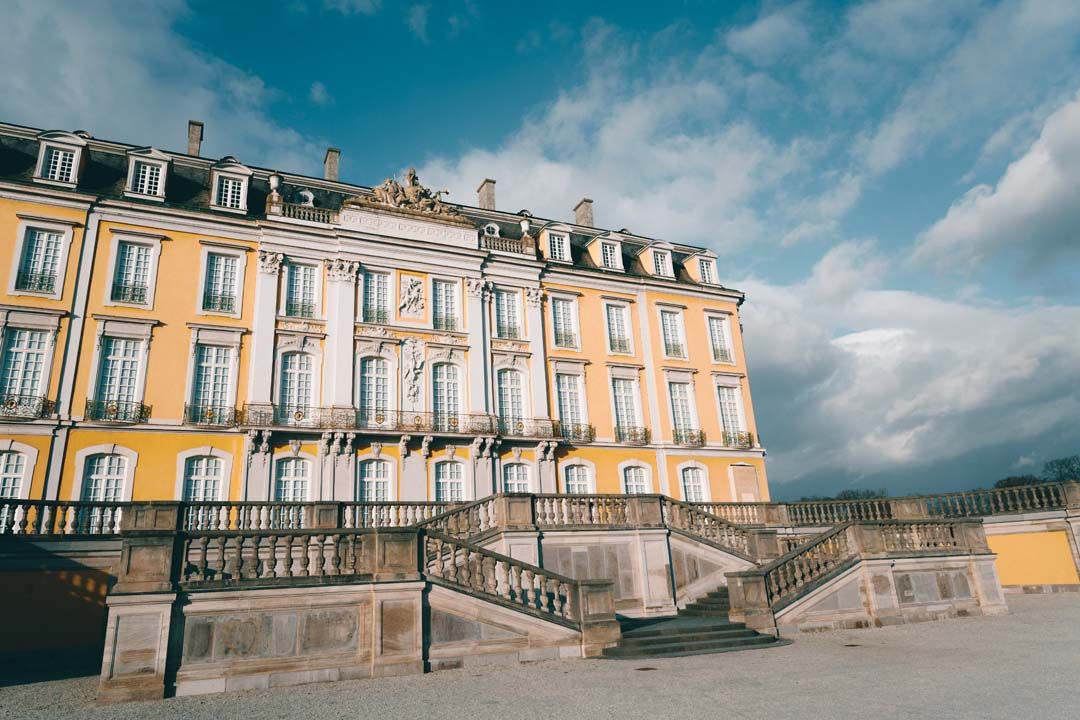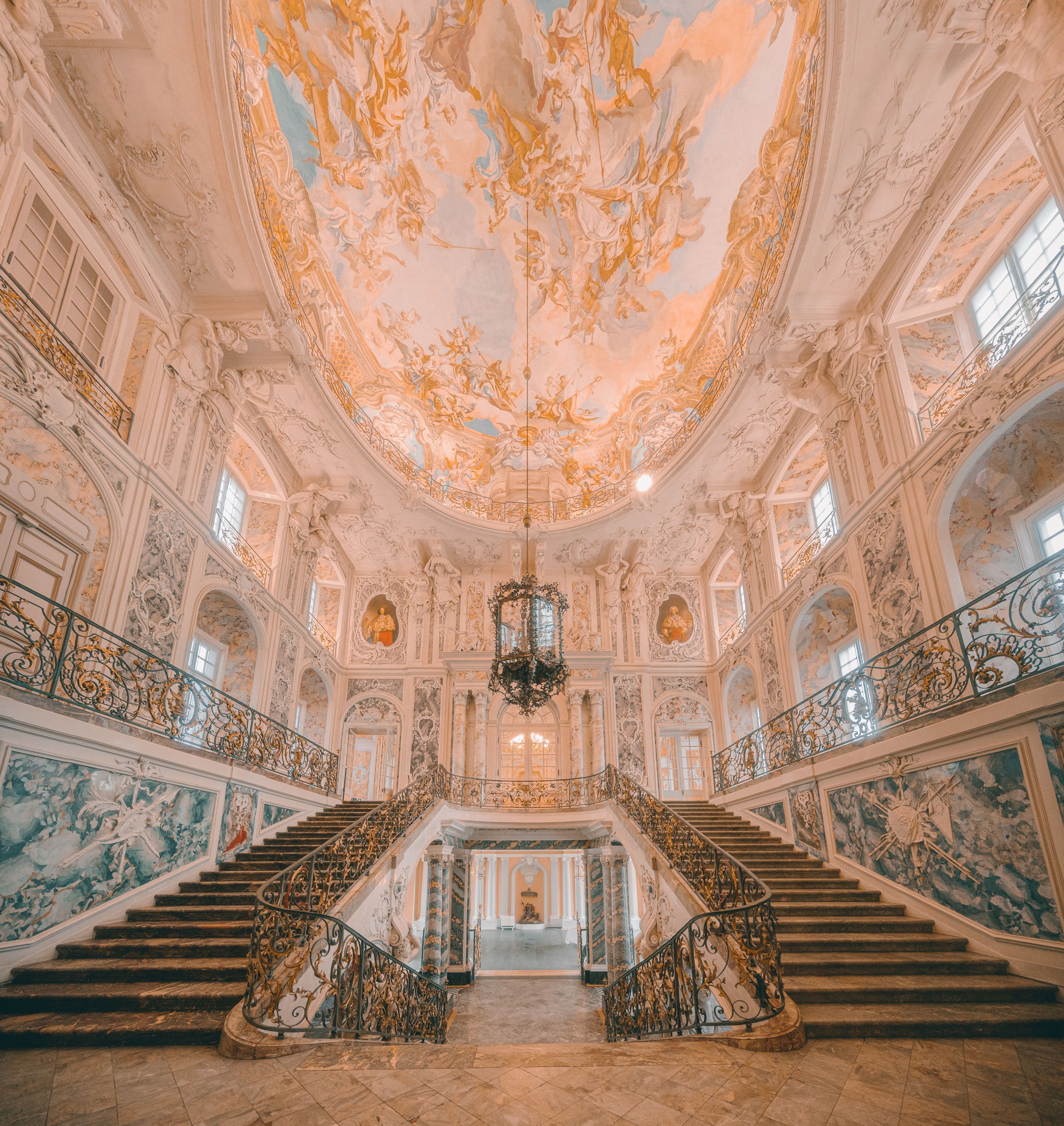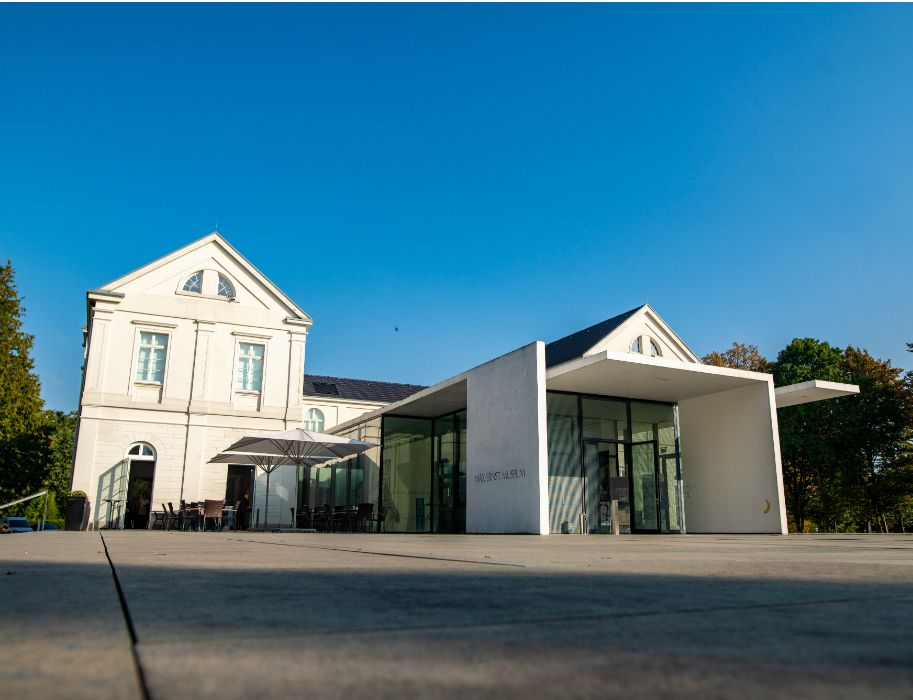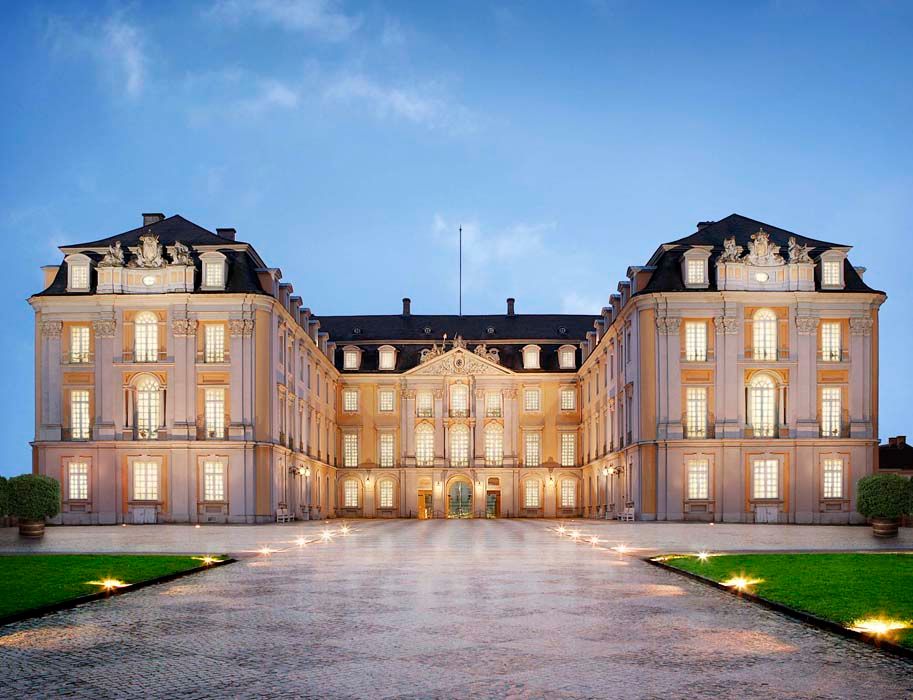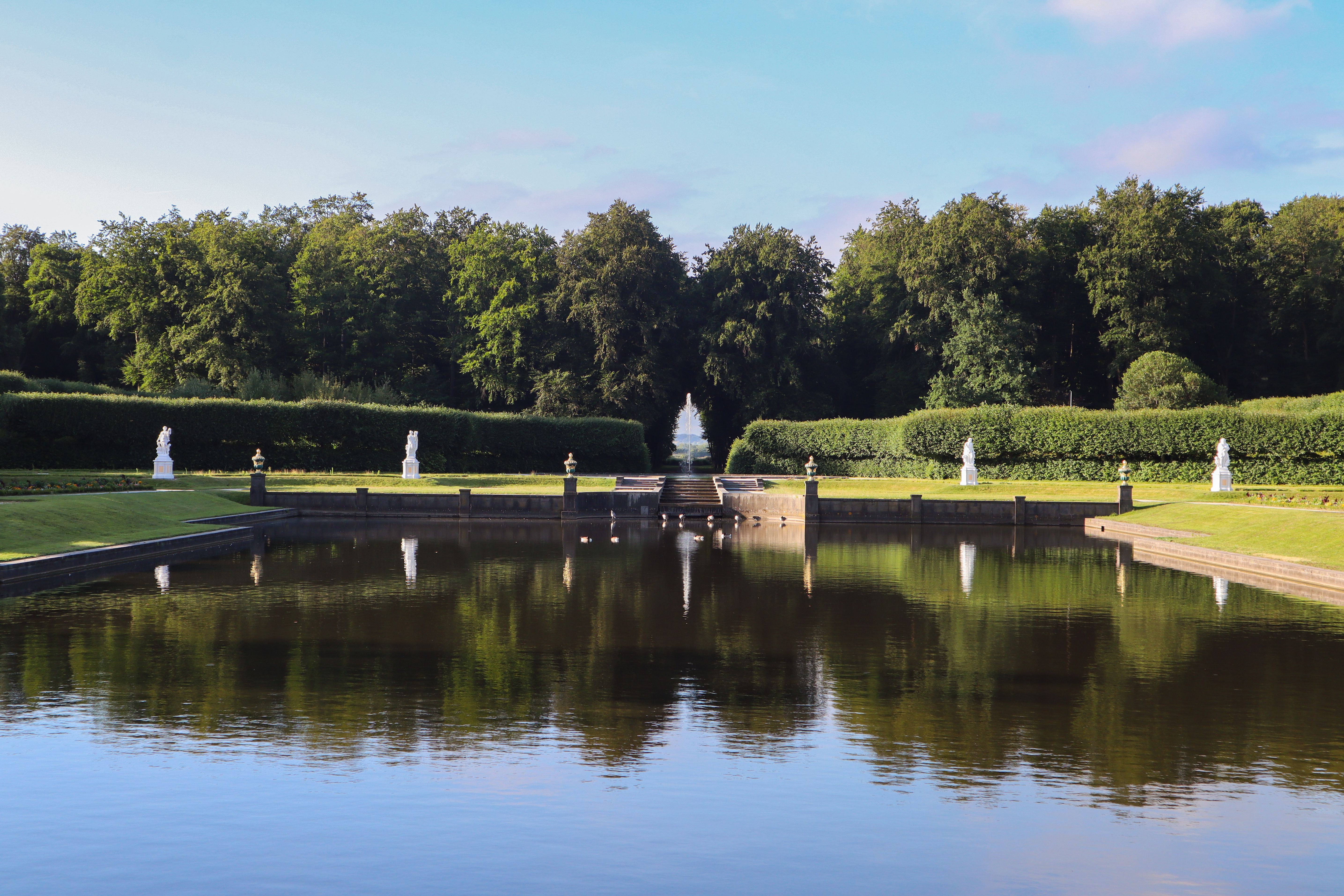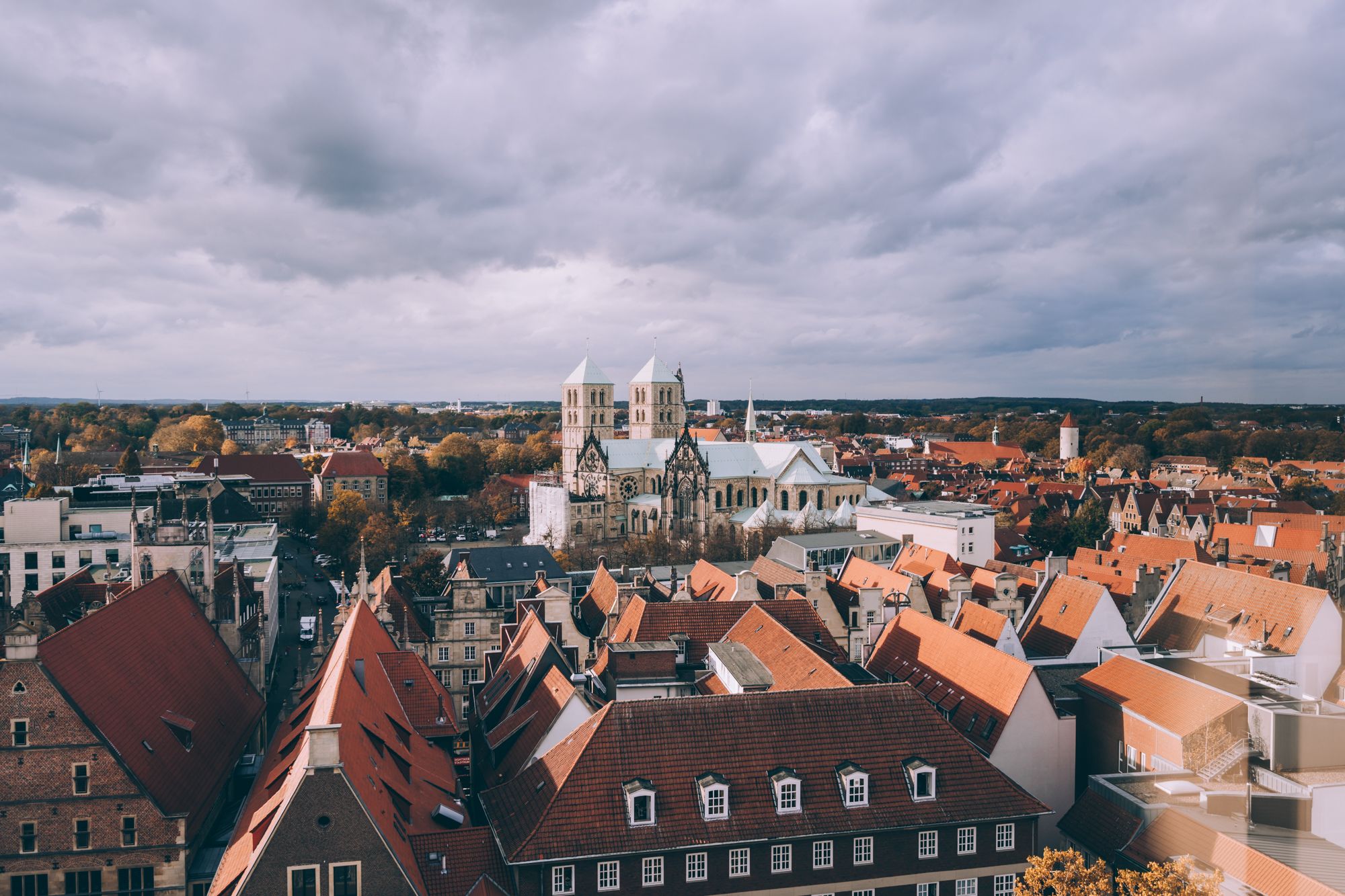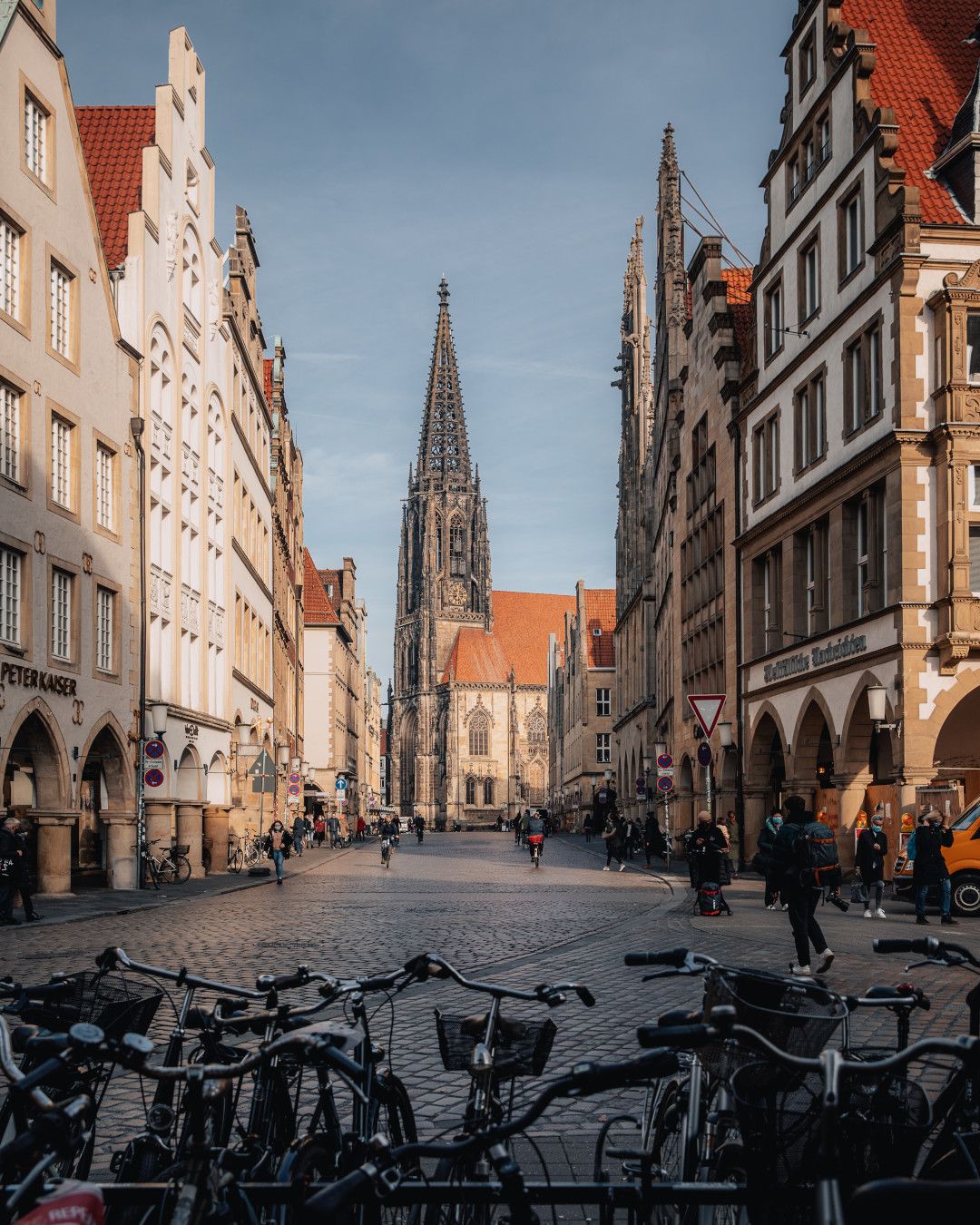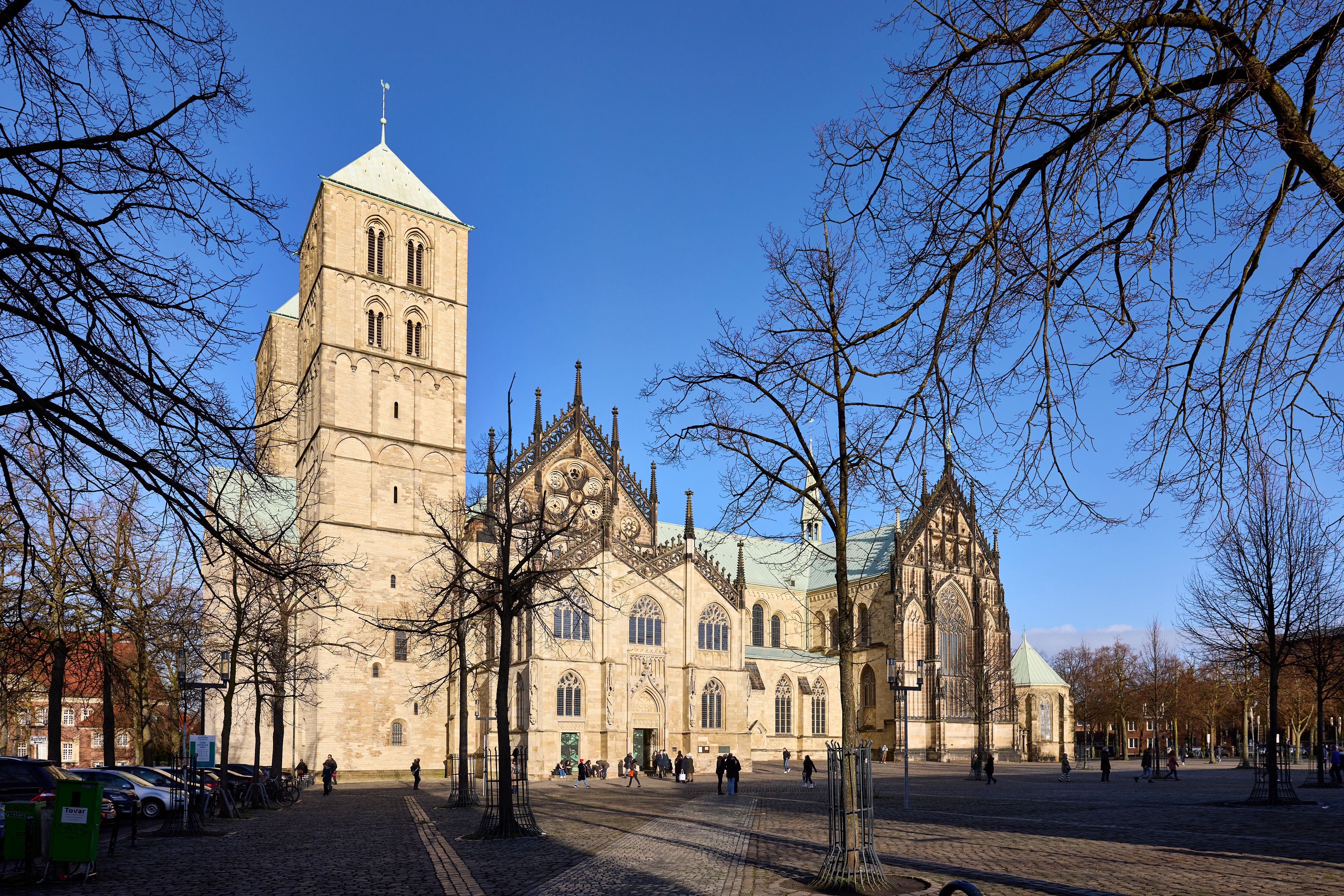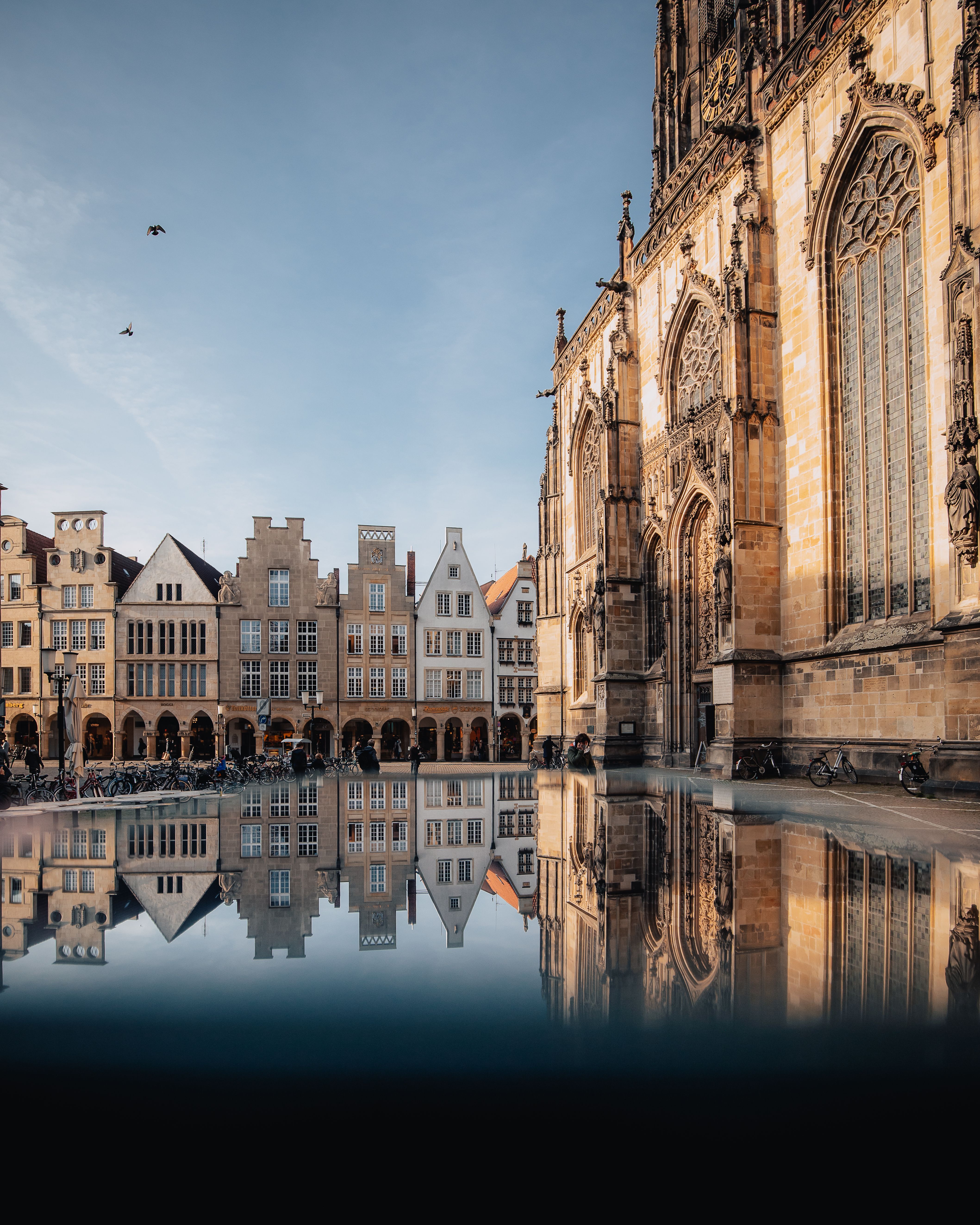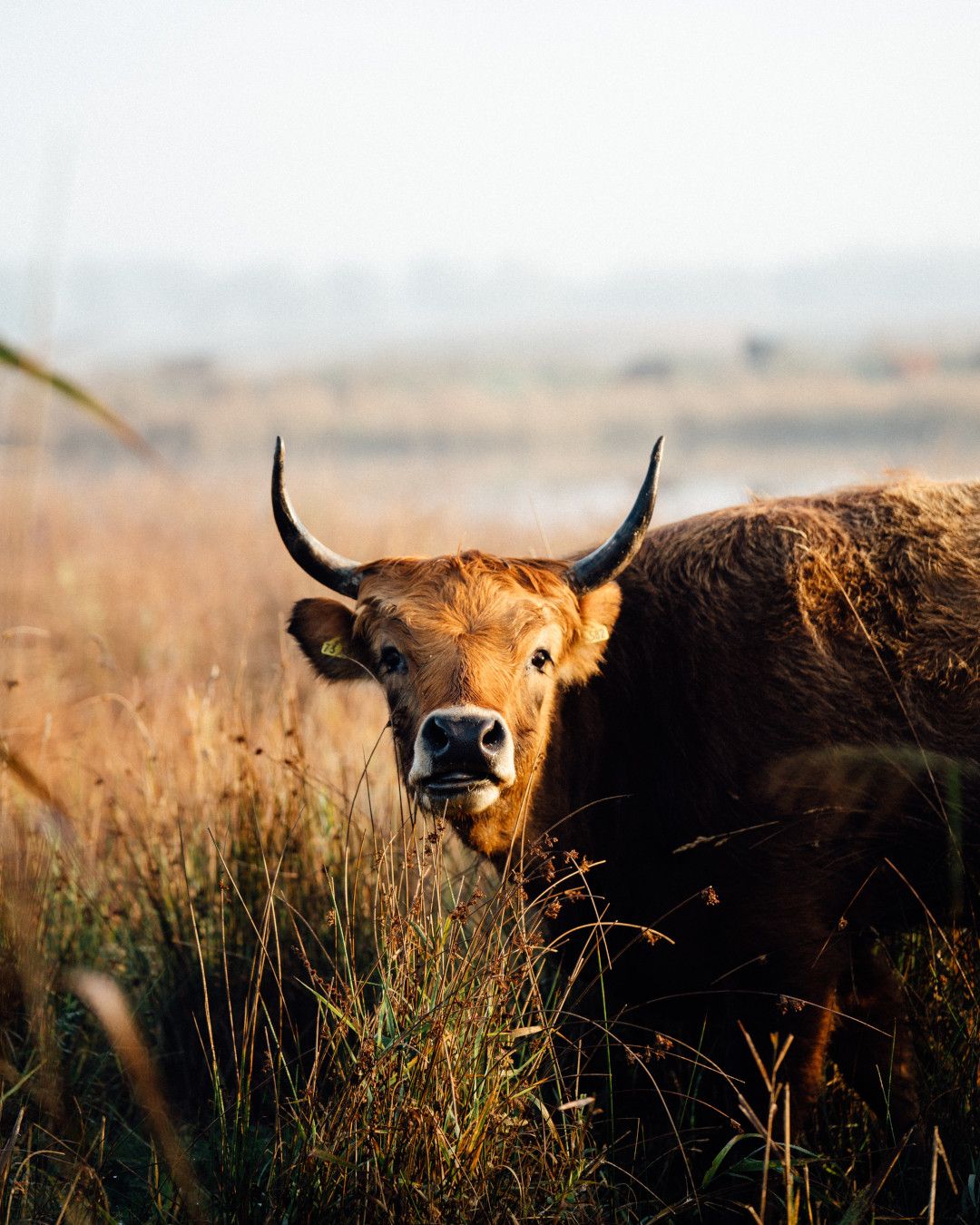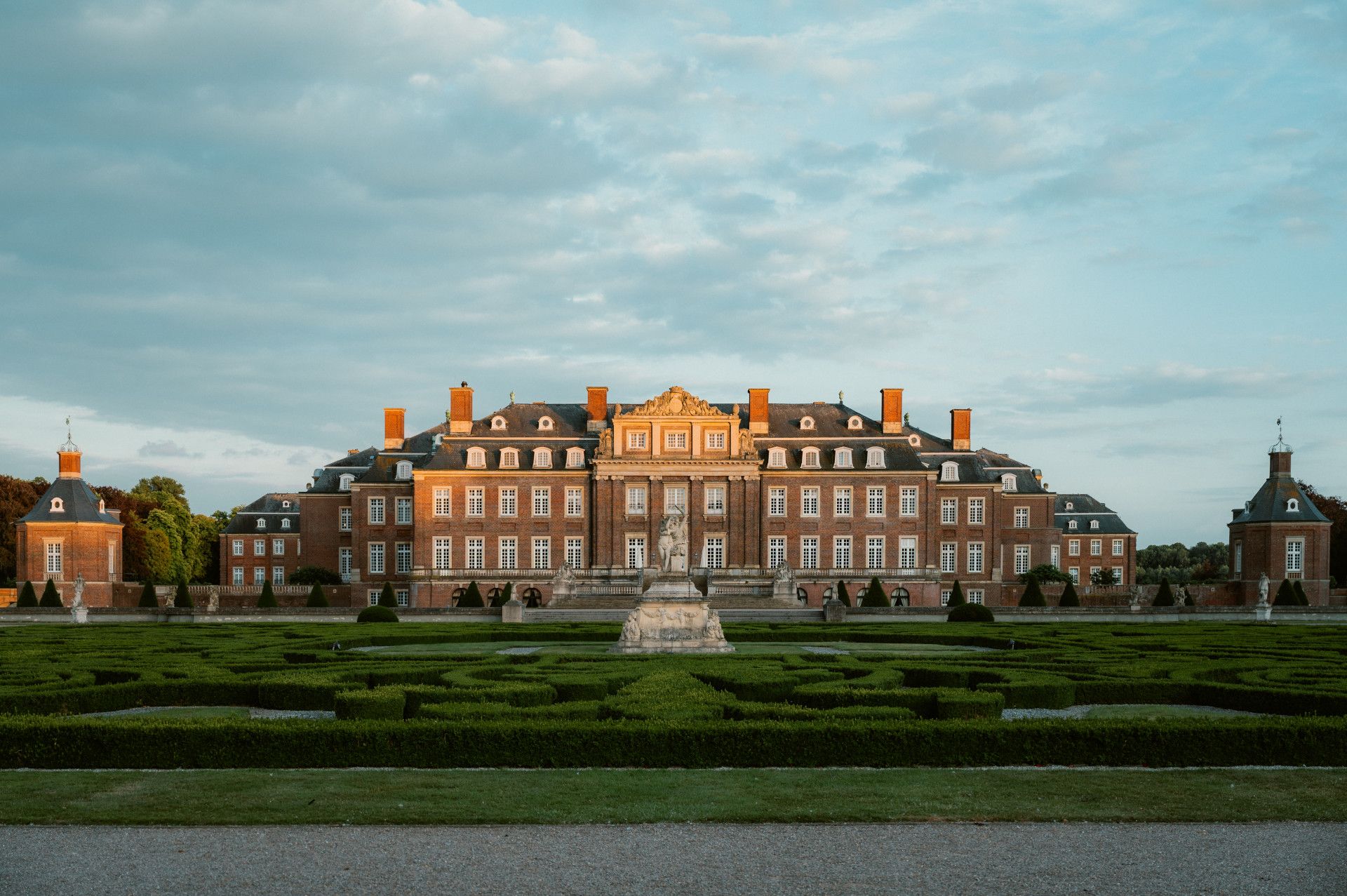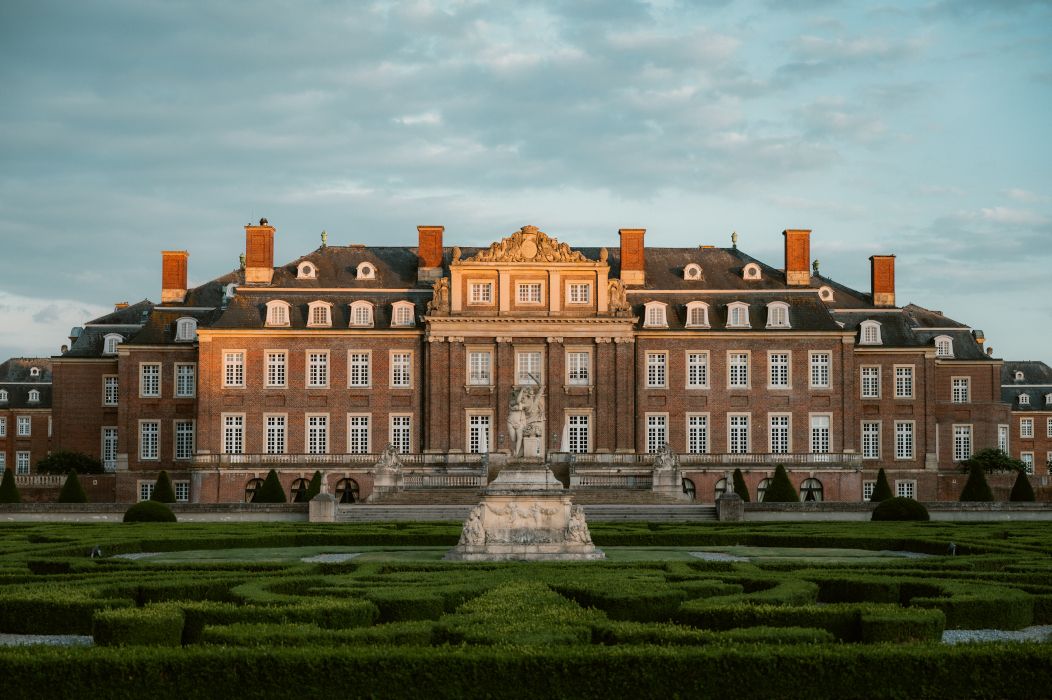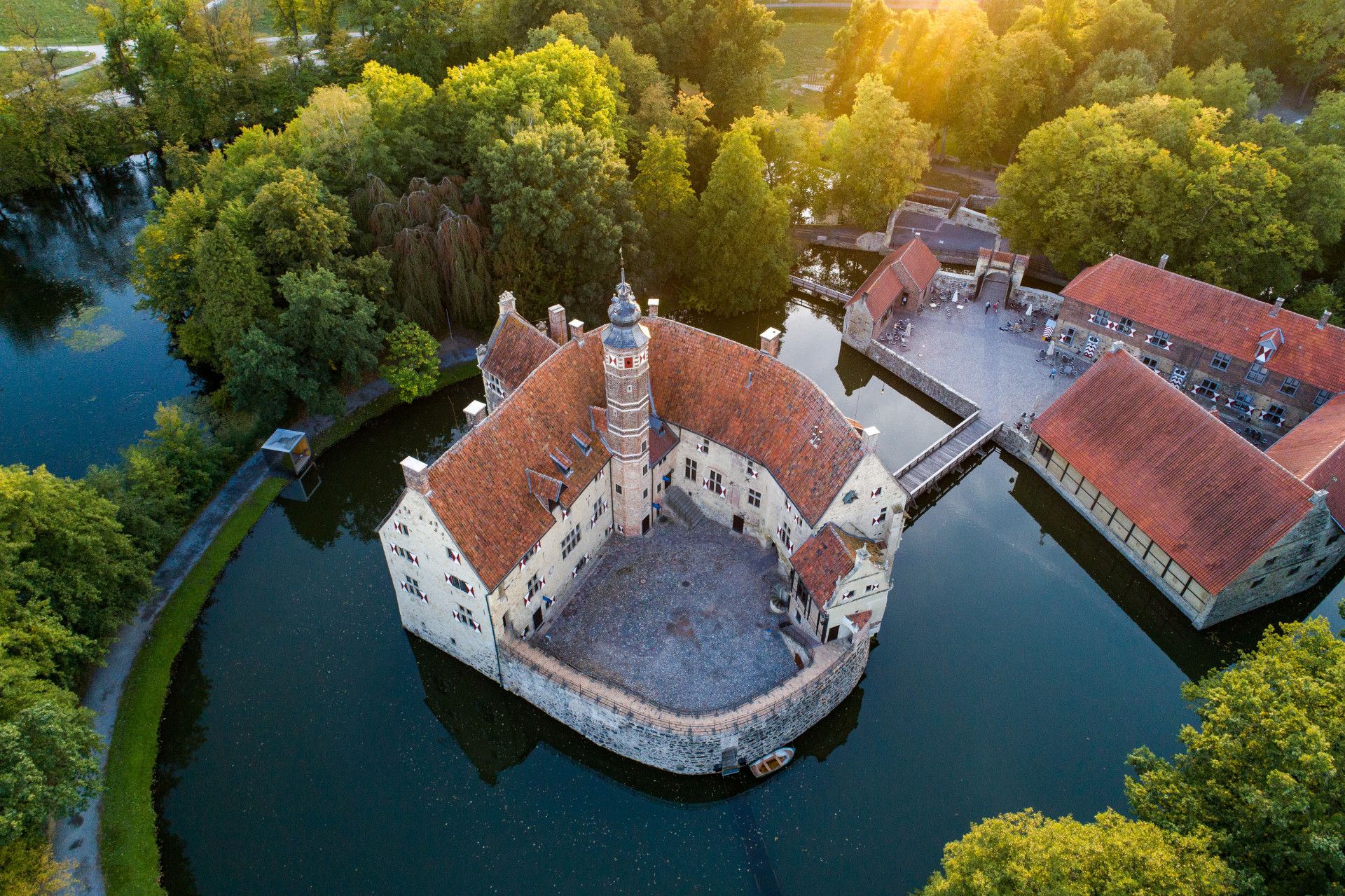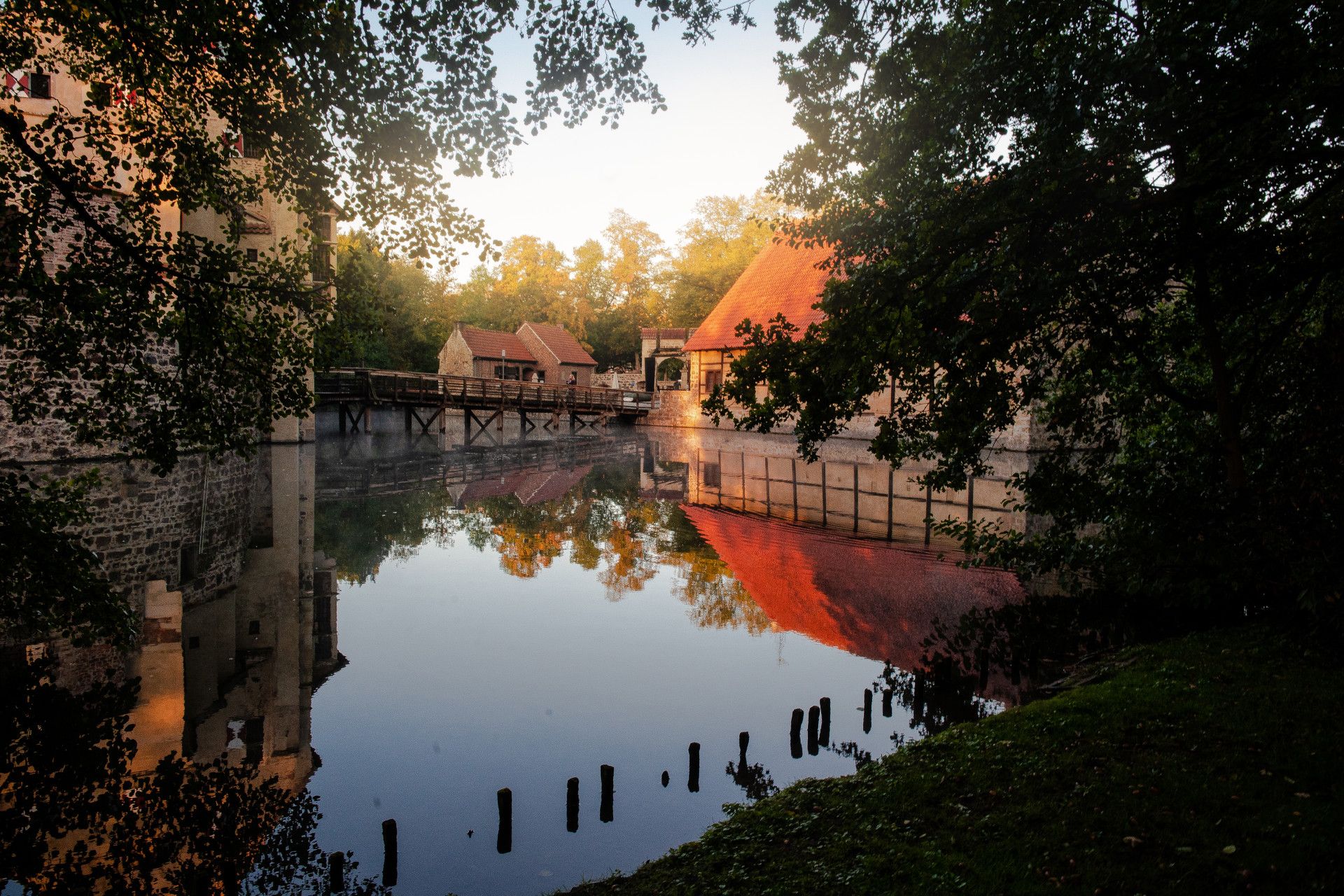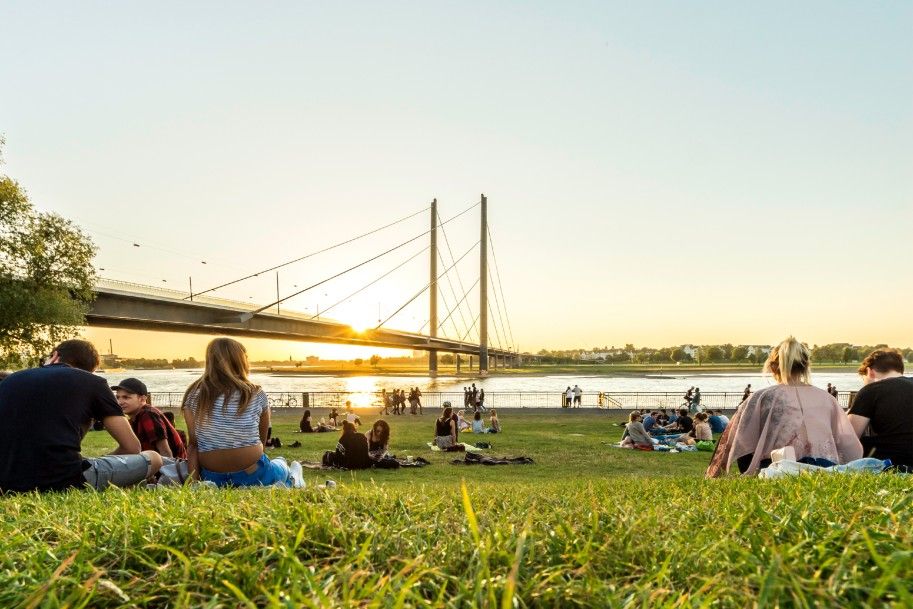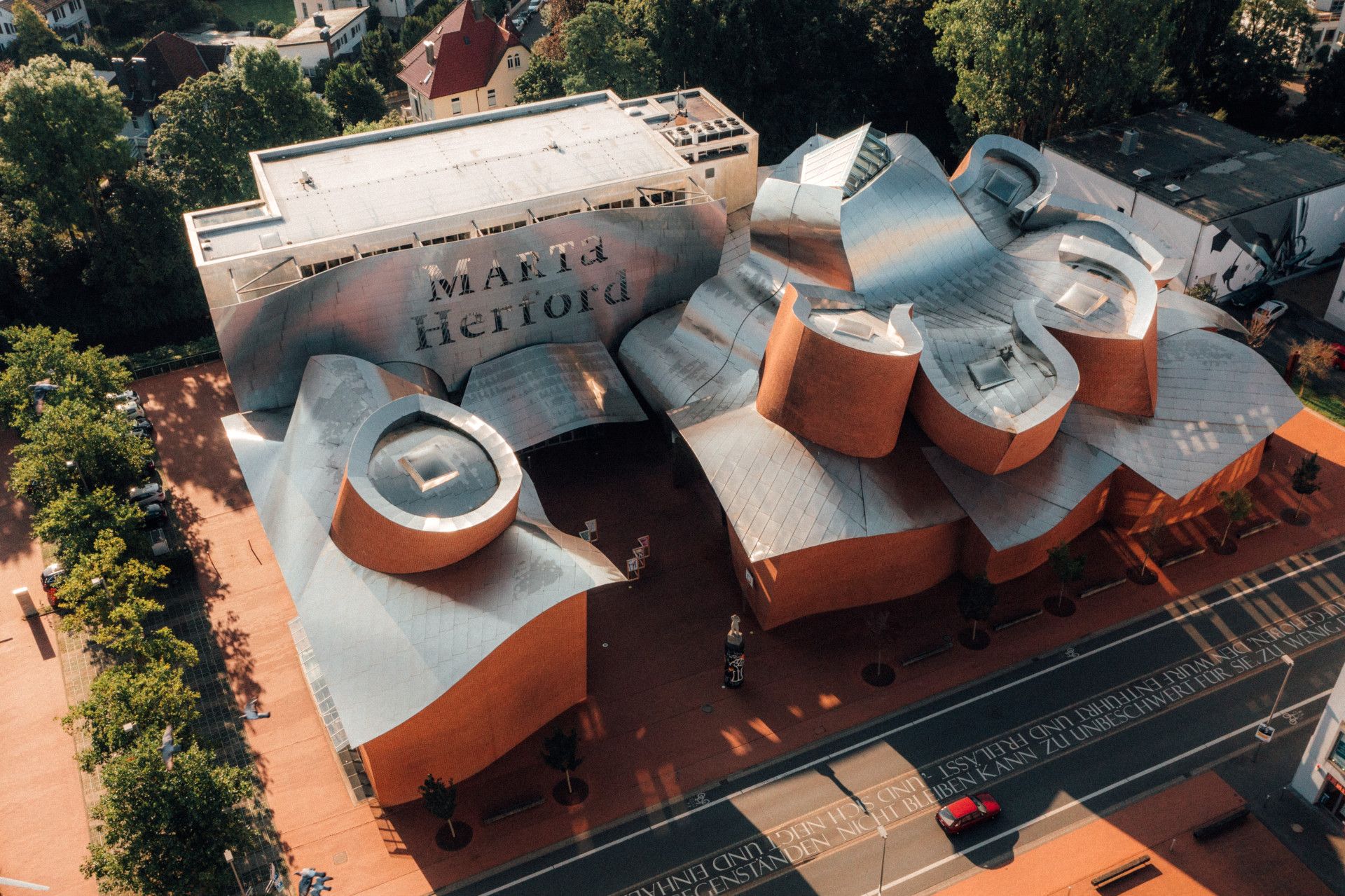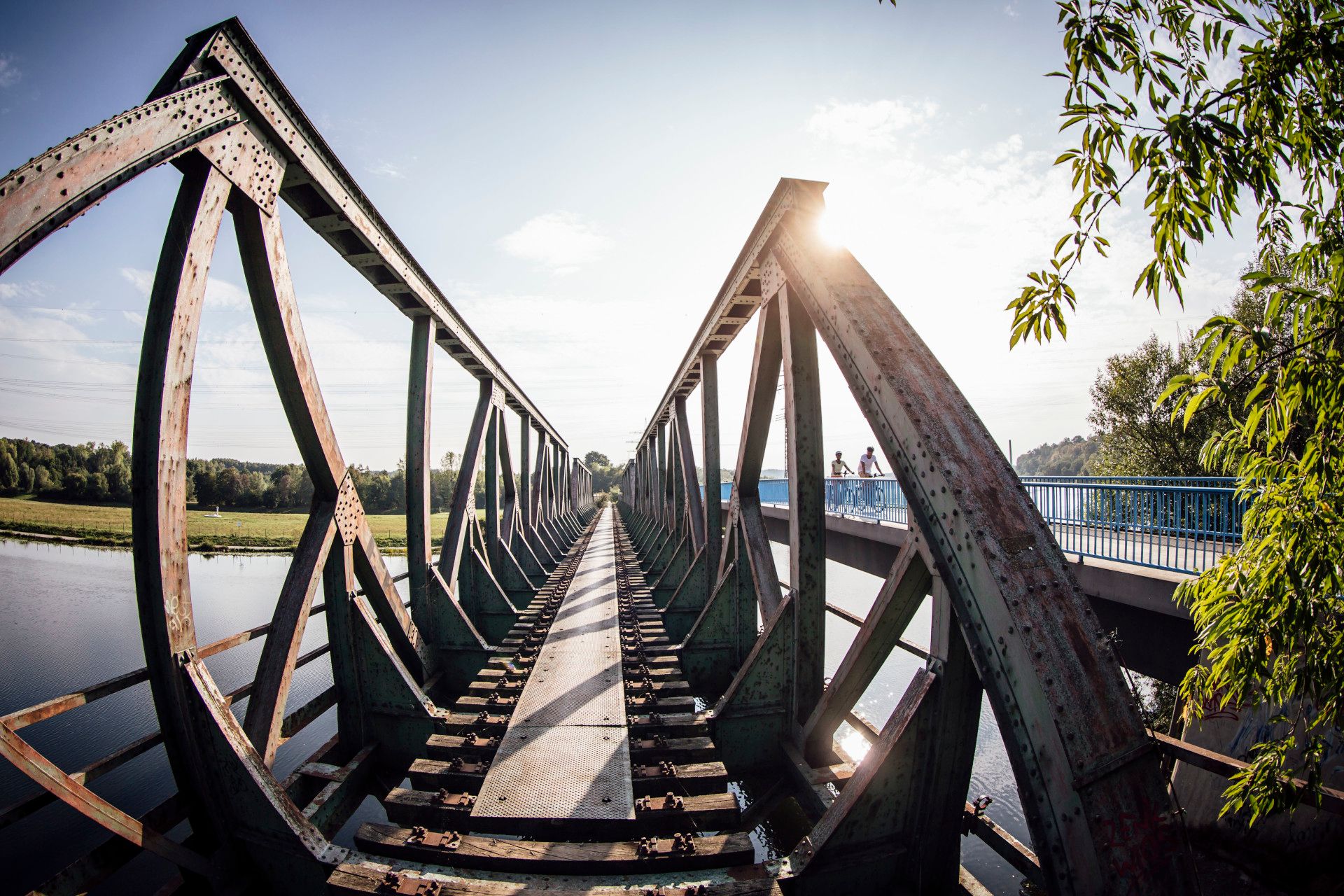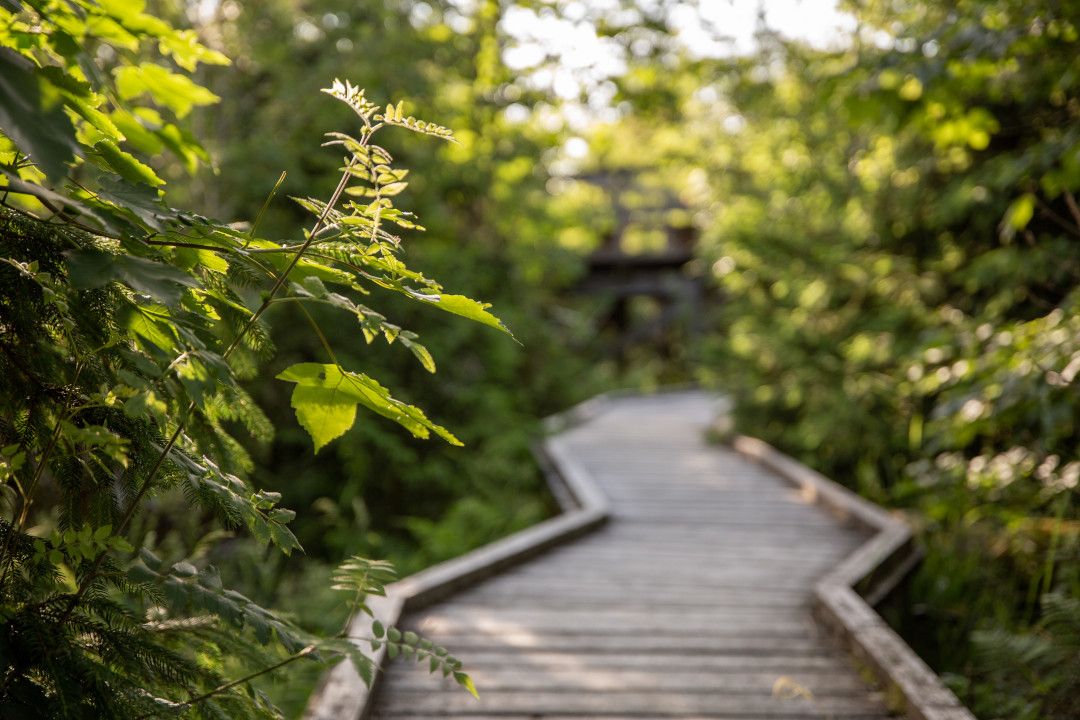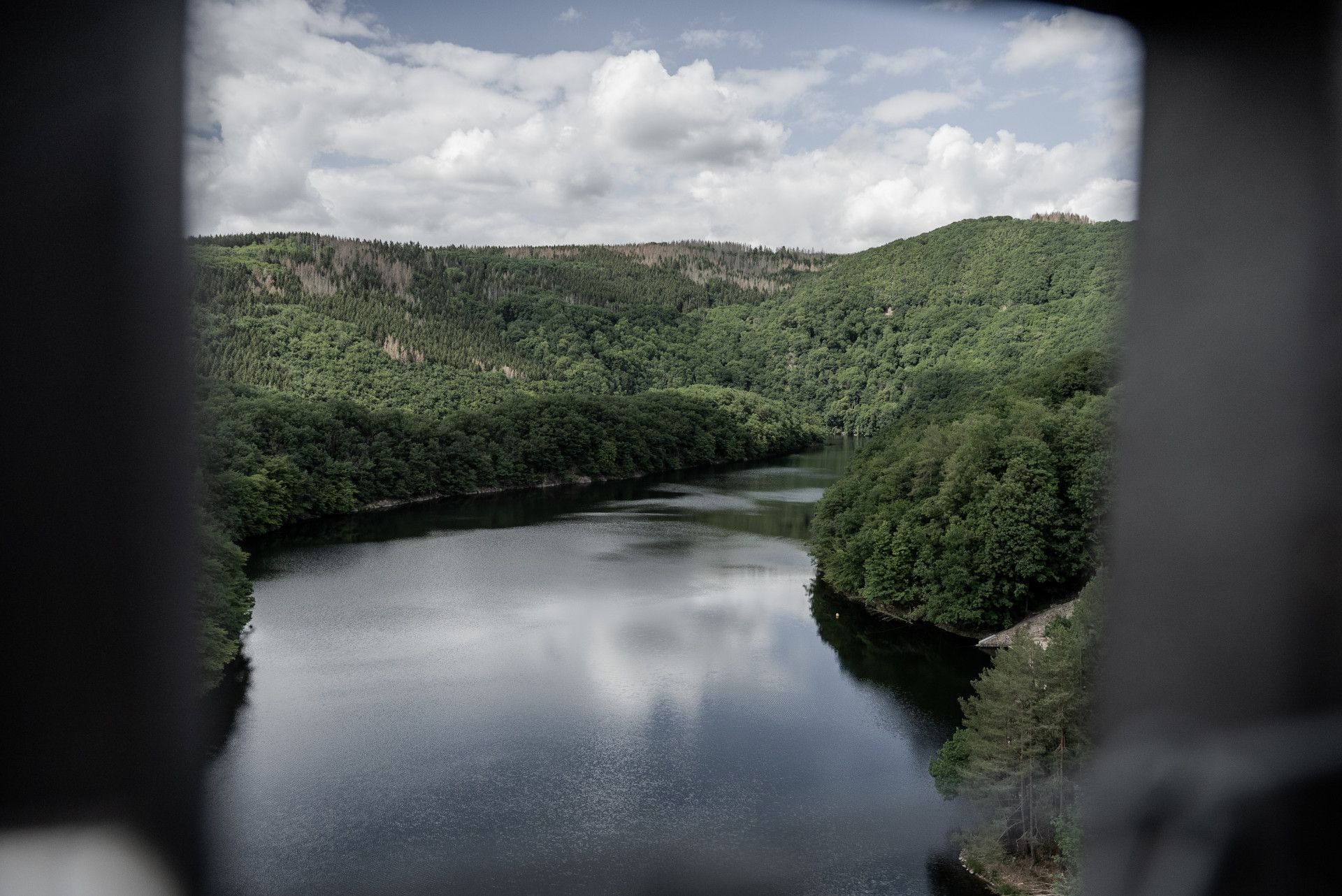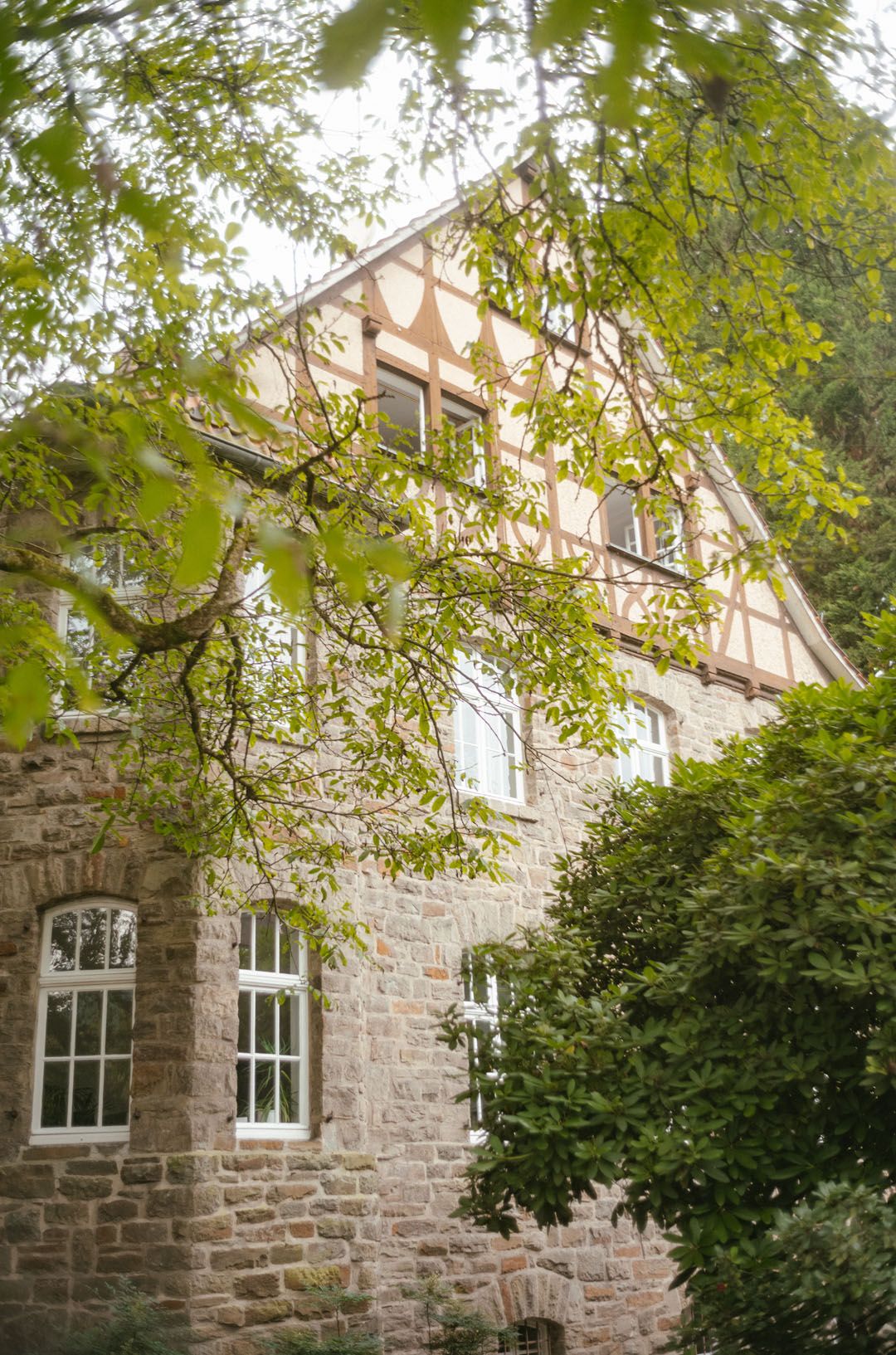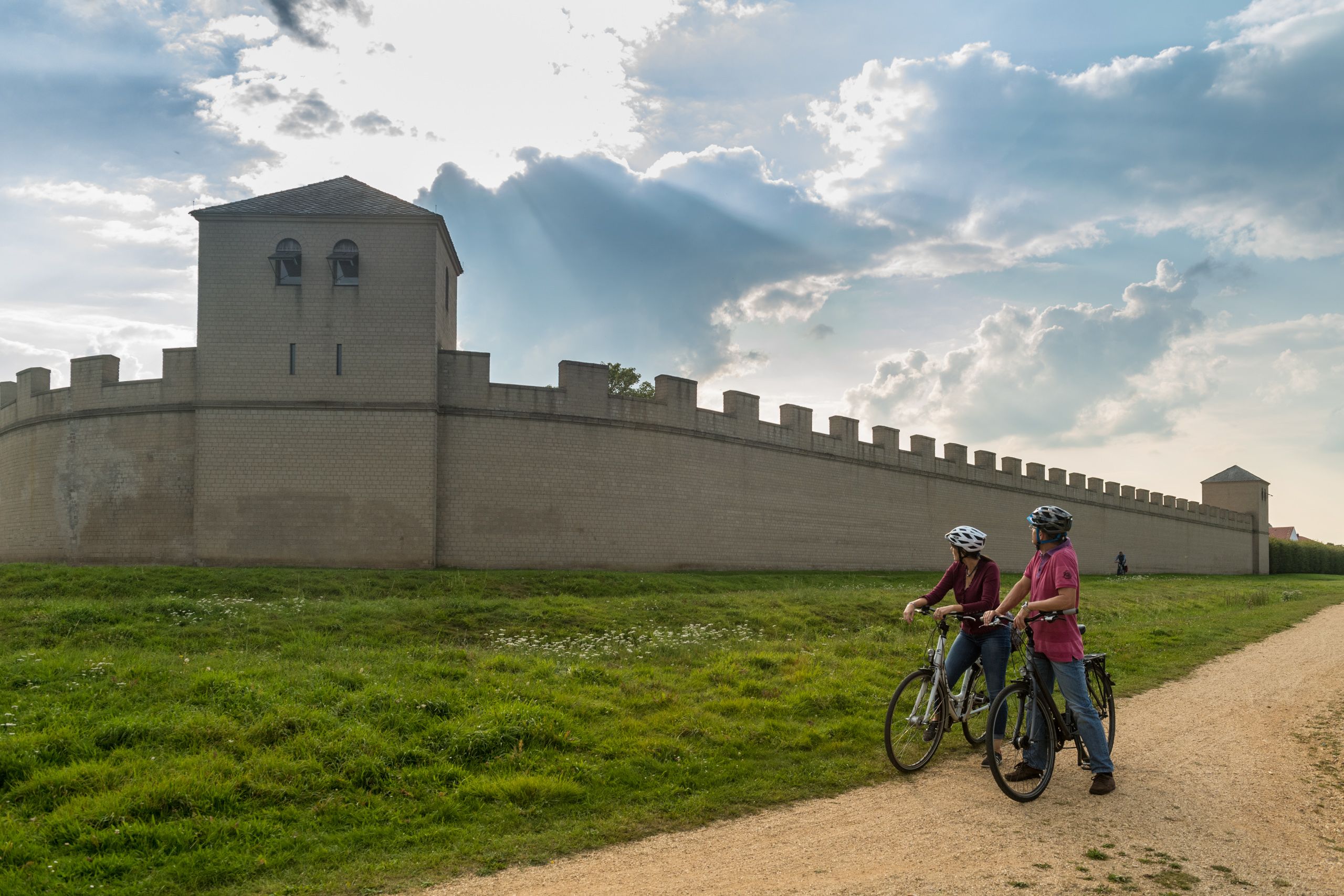When I arrive in Brühl, I'm immediately captivated. It's a short walk to Augustusburg Palace, which takes me on an extra detour through the pretty town centre with its cosy cafés and historic buildings. When I arrive at the castle, I am impressed: the rococo architecture is like a huge work of art. I stroll through the palace park, admire the magnificent avenues and imagine how gentlewomen strolled here with parasols centuries ago. Inside, it is no less impressive – quite the opposite. The steps almost seem to float, surrounded by ornate decorations and an impressive painted ceiling full of angels and clouds. It feels like stepping into a living painting.
A detour to Falkenlust Palace is of course a must. This smaller but no less impressive hunting lodge is just a short walk away. The magnificent hall of mirrors in gold and blue, which once impressed the young Mozart, is a real highlight of the lavishly designed rooms. Together with the baroque gardens – with hidden hedged areas, splashing fountains and the glittering mirror pond – and a chapel decorated with shells, minerals and crystals, the two palaces are one of the most beautiful rococo creations in the Rhineland I treat myself to a short break here, enjoy the fresh air and a snack I've brought with me, before heading back to the railway station.
My tip for museum fans: The Max Ernst Museum of the LVR is just around the corner and highly recommended.
